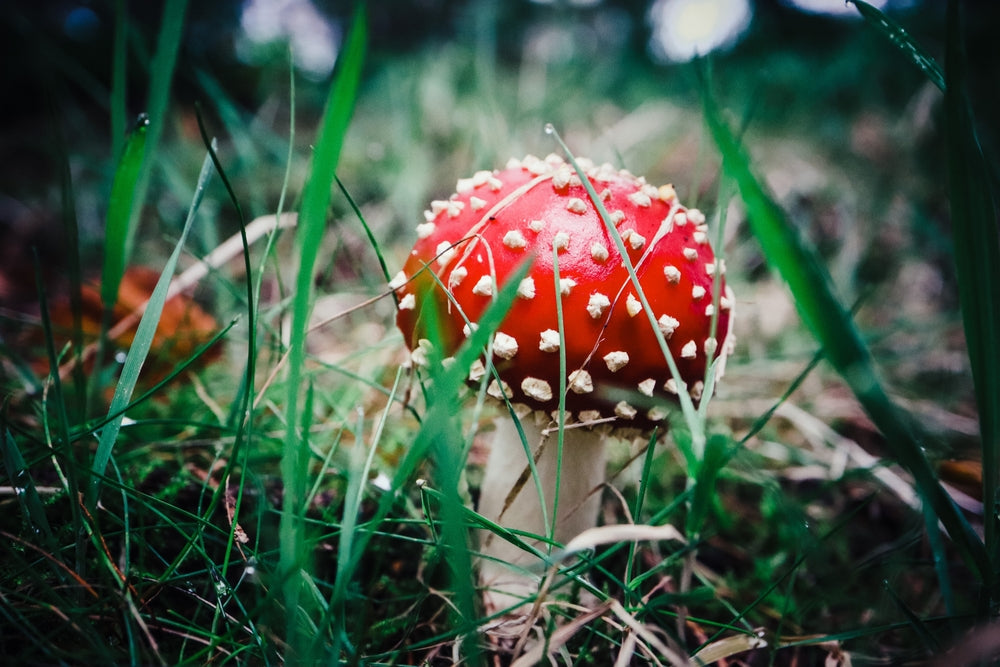
The Allure of Amanita Muscaria Mushrooms: Unraveling Nature's Colorful Delight
Amanita muscaria, also known as fly agaric or Amanita muscaria mushrooms, are a captivating and distinctive species that have fascinated humans for centuries. With their vibrant red caps adorned with white spots, these mushrooms possess an otherworldly allure that has captured the imaginations of artists, writers, and nature enthusiasts alike. But beyond their striking appearance, Amanita muscaria mushrooms harbor a rich history, cultural significance, and a chemical composition that has both intrigued and mystified scientists. In this article, we will delve into the fascinating world of Amanita muscaria mushrooms, exploring their biology, folklore, and potential applications.
Biology and Distribution:
Amanita muscaria mushrooms belong to the Amanita genus, which comprises numerous species found across the globe. They are primarily associated with birch, pine, and spruce forests in temperate regions of North America, Europe, Asia, and parts of the Southern Hemisphere. Recognizable by their iconic red and white appearance, Amanita muscaria mushrooms go through various stages of growth, transitioning from an egg-shaped structure to their mature form with a distinct cap and stalk.
Cultural Significance and Folklore:
Throughout history, Amanita muscaria mushrooms have held a significant place in various cultural traditions and mythologies. They have been depicted in artwork, literature, and religious practices of different civilizations. In some indigenous cultures, the consumption of these mushrooms was believed to provide spiritual insights, induce altered states of consciousness, and facilitate communication with the divine. The image of the red-capped mushroom has become deeply ingrained in popular culture, often associated with magical realms and whimsical tales.
Chemical Composition and Effects:
Amanita muscaria mushrooms contain several psychoactive compounds, including muscimol and ibotenic acid. These substances contribute to the mushroom's psychoactive properties, inducing a range of effects when ingested. Consuming Amanita muscaria mushrooms can lead to hallucinatory experiences, altered perception of reality, and a sense of euphoria. However, it is crucial to note that these mushrooms also carry potential risks, including toxic effects if not properly prepared and dosage control is not maintained.
Contemporary Research and Potential Applications:
Modern science has begun to unlock some of the mysteries surrounding Amanita muscaria mushrooms. Researchers are investigating their potential medicinal properties, such as analgesic and anti-inflammatory effects. Additionally, studies are exploring their potential in treating certain psychiatric disorders and addiction. However, it is essential to approach these investigations with caution and adhere to rigorous scientific methodologies to ensure the safety and efficacy of any potential applications.
Conclusion:
Amanita muscaria mushrooms, with their captivating appearance and rich history, continue to intrigue and inspire. While they have held a place in human culture for centuries, our understanding of these mushrooms is still evolving. As science unravels their secrets and potential applications, it is important to approach the topic with both curiosity and caution, appreciating the enigmatic allure of Amanita muscaria mushrooms while respecting their potential risks and complexities.
Biology and Distribution:
Amanita muscaria mushrooms belong to the Amanita genus, which comprises numerous species found across the globe. They are primarily associated with birch, pine, and spruce forests in temperate regions of North America, Europe, Asia, and parts of the Southern Hemisphere. Recognizable by their iconic red and white appearance, Amanita muscaria mushrooms go through various stages of growth, transitioning from an egg-shaped structure to their mature form with a distinct cap and stalk.
Cultural Significance and Folklore:
Throughout history, Amanita muscaria mushrooms have held a significant place in various cultural traditions and mythologies. They have been depicted in artwork, literature, and religious practices of different civilizations. In some indigenous cultures, the consumption of these mushrooms was believed to provide spiritual insights, induce altered states of consciousness, and facilitate communication with the divine. The image of the red-capped mushroom has become deeply ingrained in popular culture, often associated with magical realms and whimsical tales.
Chemical Composition and Effects:
Amanita muscaria mushrooms contain several psychoactive compounds, including muscimol and ibotenic acid. These substances contribute to the mushroom's psychoactive properties, inducing a range of effects when ingested. Consuming Amanita muscaria mushrooms can lead to hallucinatory experiences, altered perception of reality, and a sense of euphoria. However, it is crucial to note that these mushrooms also carry potential risks, including toxic effects if not properly prepared and dosage control is not maintained.
Contemporary Research and Potential Applications:
Modern science has begun to unlock some of the mysteries surrounding Amanita muscaria mushrooms. Researchers are investigating their potential medicinal properties, such as analgesic and anti-inflammatory effects. Additionally, studies are exploring their potential in treating certain psychiatric disorders and addiction. However, it is essential to approach these investigations with caution and adhere to rigorous scientific methodologies to ensure the safety and efficacy of any potential applications.
Conclusion:
Amanita muscaria mushrooms, with their captivating appearance and rich history, continue to intrigue and inspire. While they have held a place in human culture for centuries, our understanding of these mushrooms is still evolving. As science unravels their secrets and potential applications, it is important to approach the topic with both curiosity and caution, appreciating the enigmatic allure of Amanita muscaria mushrooms while respecting their potential risks and complexities.
